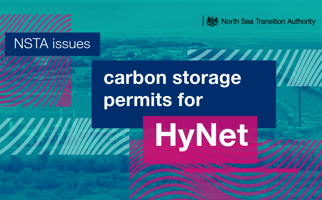
The production of natural gas from the UK Continental Shelf (UKCS) creates less than half as much greenhouse gas as imported Liquefied Natural Gas (LNG), according to data published today by the Oil and Gas Authority (OGA).
In this analysis, gas extracted from the UKCS has an average emission intensity of 22 kgCO2e/boe; whereas imported LNG has a significantly higher average intensity of 59 kgCO2e/boe.
Importing gas via by pipeline, particularly from Norway, produces an even lower average of 18 kgCO2e/boe, which suggests there is still potential for the UKCS to continue to improve its operations and lower emissions further.
The process of liquefaction, combined with the emissions produced by the transportation and regasification of the LNG once in the UK, are responsible for the considerably higher emissions intensity of LNG.
In 2019, the UKCS supplied 46% of UK gas consumption. Imported LNG supplied around 21% and the remaining 33% was imported via pipeline. Estimates predict that while gas demand will decline slightly from the current level of 69 billion cubic metres (bcm) in 2019 to 60 bcm in 2035, UK gas production will fall at a faster rate from 35 bcm in 2019 to 16 bcm in 2035.
Current government forecasts suggest that gas will remain a vital part of the UK’s energy mix as we move towards net zero. As long as this demand exists, managing declining North Sea production to maximise value, minimise greenhouse gas emissions and reduce reliance on hydrocarbon imports are all essential.
There is still scope to significantly reduce UK production carbon footprint. The industry should rapidly progress this or risk losing its social licence to operate. The OGA considers the oil and gas industry to be well-placed to unlock solutions which will help the UK reach net zero greenhouse gas emissions by 2050.
To support this, the OGA is currently consulting on integrating the net zero target into its overall Strategy and across all its work, including updating the ‘central obligation’ to include emissions reduction.
Hedvig Ljungerud, OGA Director of Strategy, said: “The oil and gas industry is currently having to deal with the effects of the global pandemic and the rapid fall in commodity prices, and we’re working with the government and the industry to safeguard supply and thousands of jobs.
“This data highlights the need to continue producing our own gas as long as we consume it, to minimise emissions, and support the drive to net zero, while pushing ahead with emissions reductions from UK production.”
Notes to editors:
- Emissions intensity comparison of UKCS gas production and imported LNG and pipeline gas - https://www.nstauthority.co.uk/the-move-to-net-zero/benchmarking-and-analysis/
- Data sourced from: Wood Mackenzie Upstream Emissions Benchmarking Tool; Environmental and Emissions Monitoring System (EEMS); European Union Emissions Trading Scheme (EU ETS), Department for Business, Energy and Industrial Strategy (BEIS), Norwegian Petroleum Directorate (NPD); Thinkstep, 2017, GHG Intensity of Natural Gas Transport; Oil and Gas Authority Petroleum Production Reporting System (OGA PPRS).
- LNG is imported from a number of countries including USA, Qatar and Russia.
For more information, please contact oga.pressoffice@nstauthority.co.uk / 0300 020 1072


